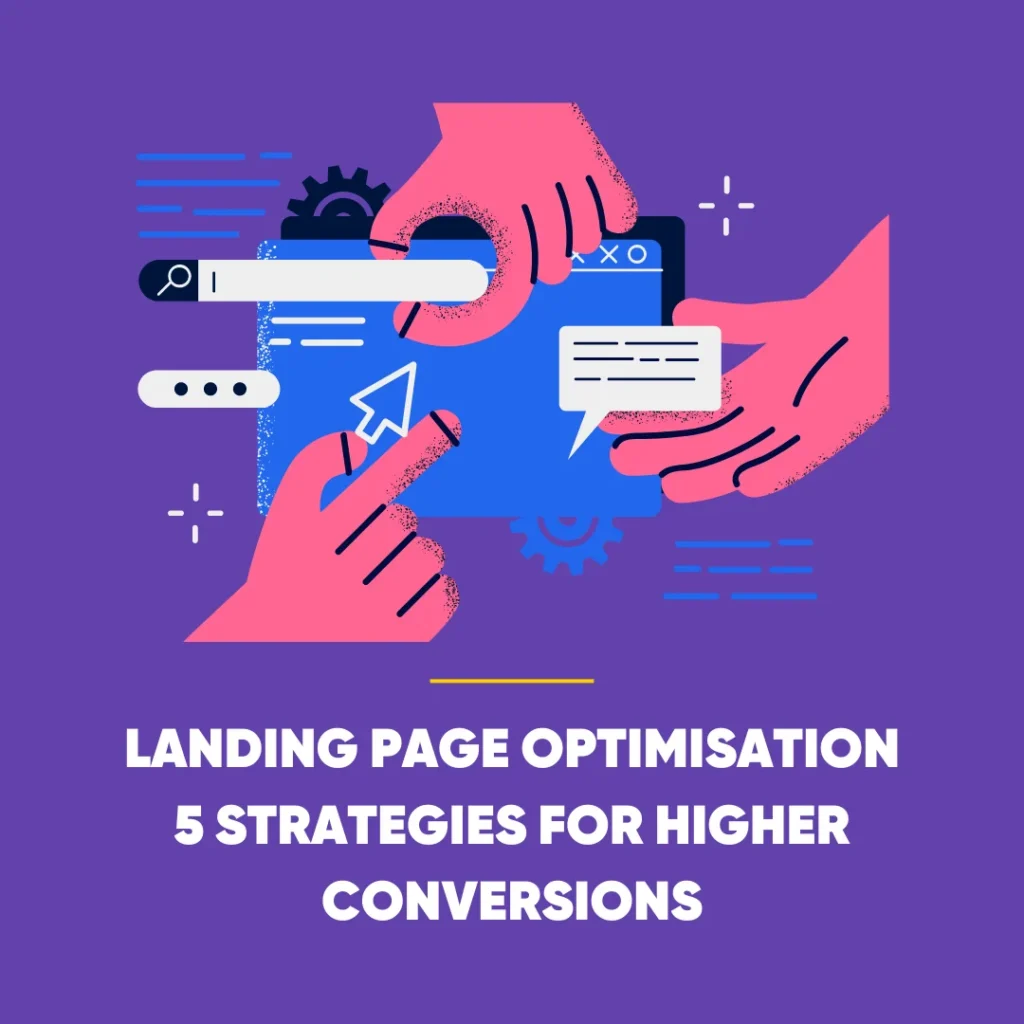Keywords
Keywords are ideas and topics which defines what your content is about. In terms of SEO, these are words and phrases that searchers enter into search engines. These are also known as ‘search queries’.
But why is this important to us?
Well, that’s simple! It’s important because it helps you find words and phrases which your audience are searching for on Google. So by researching and selecting the most appropriate target keywords, you immediately create the opportunity to rank well in search engines for your specific topic.
Keyword research is the first step in the SEO copywriting process, and an essential part of your SEO strategy. Before you create your website’s content, you have to find out which search terms your audience uses. Their search terms are your keywords. So, based on these keywords you can start writing useful and high-quality content.
As well as this, keyword research can tell you vita information about your business. For instance, where you rank, which keywords are easy to rank for, and which keywords your competitors are ranking for. These are invaluable to the boosting of organic traffic!
Overall, the purpose of keyword research in SEO is to inform your website content and increase relevant organic search traffic.
Here, we’ll take you through the many steps involved in keyword research!
ESSENTIAL CONCEPTS OF KEYWORD RESEARCH
FOCUS KEYWORD
A focus keyword or key phrase is the word or phrase you want to be found on a page within your site in Google. You can determine your set of focus key phrases by doing keyword research.
LONG TAIL KEYWORDS
Long-tail keywords are more specific and less commonly searched for than, so-called head keywords. Typically, they only focus on a niche.
So the longer and more specific search terms are, the easier it will be to rank for them since there will be less competition. Even though there are less people searching for these terms, they might be more motivated to buy, subscribe, or sign up.

KEYWORD STRATEGY
Your keyword strategy is about the decisions you make based on your keyword research.
So, here’s some questions to think about:
- What content are you going to create first?
- Will you focus on the head or tail?
- How and where will you publish it?
- Will you create a piece of writing, a post or a product page, a video tutorial, or an infographic?
SEARCH INTENT
You have to discover what a searcher actually wants or needs. This is where search intent comes in handy!
You’re not just looking at keywords, but the underlying goals of what a searcher wants to know, do, or buy.
Essentially, your content should provide a solution to the searcher’s “problem”. This is also known as content design.
HOW IS KEYWORD RESEARCH DONE?
We believe that there are 8 crucial steps you need to take whilst carrying out your keyword research.
Here we’ll guide you through this process step-by-step, and give you practical tips to start your own keyword research.
- DETERMINE YOUR MISSION
Firstly, you need to think about your mission.
So you should reflect on these questions:
- What is the main goal of your business or organization?
- What makes it special?
- Who exactly are you trying to reach?
- What promises do you make on your website?
Then your next step is to take your time and, write down your mission. Once you’re able to answer these questions in detail, then you’ll have taken the first and most important step in your keyword strategy.
The market you’re in determines whether your mission will prove genius enough to rank high. Some markets are highly competitive, with large companies dominating the search results. These companies have huge budgets for marketing in general and SEO in particular. So, competing in these markets is tough since ranking in these markets is tricky.
Perhaps you sell cruises to Hawaii. You offer great facilities for children, making the cruises especially suitable for young or single parents. Offering the best cruises to Hawaii for young parents could very well be what makes your service unique.
Ideally, you should look for that special thing which makes your product stand out from your competition. Typically, this should be your mission and your niche. This is what you have to offer your audience!
So, if you’re launching into a competitive market, then your best bet is to start out small. Once you ‘own’ a small part of that niche, and become a bigger name in your own business
- MAKE A LIST OF KEYWORDS
The second step is creating a list of your keywords, preferably in a spreadsheet such as Google Sheets or Excel.
With your mission in mind, try to get into the heads of your desired audience.
Here’s some questions to get you started:
- What will these people be looking for?
- What kind of search terms could they be using whilst looking for your amazing service or product?
- Which of their “problems” does your product solve?
Write down as many answers as possible. If your mission is clear, then you will have a pretty clear image of your niche and unique selling points. These are the search terms you want to be found for.
- RESEARCH YOUR KEYWORDS
After you’ve created this first list, it’s time to dive a bit deeper into your keywords. Luckily, there are some tools that make your keyword research a bit easier.
The first is Google. All you need to do is Google the keywords you already came up with, and then check the searches Google suggests while you are typing. Those are the questions people actually asked Google! Also, you can check out the “related searches” on Google’s results page.
If you need more guidance, then have a look at our related key phrases tool in Yoast SEO or Answer the public.
These tools will provide you with all kinds of variations of your key phrases, synonyms, and related key phrases. Check them out and add all the relevant key phrases to your list. In our post on keyword research tools you’ll find more details on how to use these and other tools.
- DON’T FORGET THE LONG TAIL
When people start out with keyword research, they tend to focus on very popular “head” terms. Unfortunately, those head keywords are mostly taken by large businesses.
However, long-tail keywords get less search traffic but there’s less competition too. Therefore, it’s easier for you to rank on those keywords instead. Moreover, long-tail keywords even have a higher conversion value, as they focus more on a specific niche.
A long-tail keyword is often longer and more focused than a head term. If your head term is [puppy training], a long-tail keyword could be [positive puppy training for Labradoodles in Amsterdam].
Note: Using the tools mentioned in step 3 will also help you find more long-tail variants of your keywords.
As well as this, don’t forget to add the long-tail keywords to your spreadsheet too. Simply put the head terms in the first column and add (multiple) columns for long-tail keywords. This will also help you create a proper site structure later on. The more long-tail your search term is, the further down into your site structure its landing page belongs.
- ANALYSE THE COMPETITION
Whether you should go after long-tail keywords largely depends on your competition. If the competition in your niche is high, then you’ll have a hard time ranking on competitive head terms.
In contrast, if you have little competition then you’ll be able to rank for more of your head terms. So you’ll need to do some benchmarking for SEO.
But how is long-tailing done?
All you have to do is Google the keywords that came out of your keyword research. You should start with your most ‘head’ term. So, check out the search engine result page (SERP). These are the websites you’ll be competing against once you optimize your content for such a keyword.
Now you need to dig a little deeper. So here’s some questions to get you started:
- Do you see professional websites or company websites?
- Are you ‘equal’ to these companies?
- Does your website fit among these sites?
- Is your company of similar size, and does it have as much influence in your niche?
It’s harder to rank when you’re competing against sites with strong brand names. If brands are known from TV or radio commercials, then your chances to rank high will become even smaller. Nonetheless, it won’t hurt to take a look at their content.
So you should examine whether your content is well written and well optimized. This is because, if your competition has poor content, then you might have a chance to outrank them!
Also, take a look and see if there are any ads in Google. If you have a Google Ads account, you can check the pay-per-click. Search terms that have a high pay-per-click are usually also harder to rank for in the organic results.
Finally, make sure to make notes in your spreadsheet about your findings for the keywords you’ve investigated!
-
TAKE A CLOSER LOOK AT SEARCH INTENT
Today’s SEO strategies should revolve around answering the questions people have, or providing the best solution for their “problem”.
So whenever someone enters a search query into a search engine, they are on a quest for something. Every type of question needs a specific answer.
But how can these questions be answered?
All you have to do is try to find out which intent your audience is searching for when they type a certain key phrase into Google.
So I guess you’re wondering, “what are the different types of intent?”
Well that’s easy! Here are the four types of intent:
- Informational intent: Information on a specific
- Navigational intent: They want to access a specific website
- Commercial intent: They want to research something before buying
- Transactional intent: They are looking to buy something right now
You can learn more about the search intent of certain queries by looking closely at the type of pages that already rank for that query.
So think about this: Do you mostly see product pages? Or a lot of informational blog posts? Do you see videos? Or is it a mix?
These are all hints to what Google assumes the search intent of a certain query is. This post explains how to use the search results to create great content that matches the right intent.
Find out which kinds of intent apply to your key phrases, and add your findings to your spreadsheet!
- DETERMINE A KEYWORD STRATEGY
Based on the data you’ve collected now, you can determine a keyword strategy. If you’ve followed the steps above, you should have a spreadsheet with a substantial amount of key phrases. This will have information about the competition, and the search intent of your audience for those key phrases.
Now think about these questions:
- How does my website hold up compared to the websites in the SERPs?
- Are you of equal size and marketing budget
Focusing on a whole bunch of long-tail keywords combined could very well attract a lot of traffic. Once you’ve managed to rank for those long-tail keywords, aiming for more head terms will become easier.
Now you need to think about your content. So here’s some questions to think about:
- What was the search intent for your key phrases?
- What audience are you looking for?
- Which content can you create that isn’t there yet?
- How can you stand out in terms of quality, or providing solutions?
This will help you decide on the type of content you’re going to create.
- START CONSTRUCTING LANDING PAGES
Creating awesome landing pages is essential if you want to get traffic to your website. So you’ll need to build landing pages for your search terms, but you don’t have to create all these pages immediately. It can be a long-term effort. Your keyword strategy will help you prioritize. All you need to do is build a good landing page, and use the Yoast Duplicate Post plugin to copy these to quickly make new ones.
For your most important key phrases, you should create cornerstone content articles. These articles provide the best possible content about your own keyword which is authoritative and all-encompassing.
Luckily for you, more long-tail articles will link to this cornerstone content. This should be part of your internal linking strategy, which Yoast SEO Premium can help you implement.
TIPS FOR KEYWORD RESEARCH
This all might sound pretty simple, but we know it’s a lot of work and easier said than done. When put to the test, you will almost definitely bump into some common issues or questions. Here we’ll give you some tips to make it work!
PRIORITISE YOUR KEYWORD LIST
How many keywords should you have? That’s the ultimate question, isn’t it?
Well I can’t tell you the exact number of keywords you should have, but we can tell you that you need a lot of them. As many as you can think of actually. However, more than 1000 keywords are probably too many! Even if you’re a reasonably small business, then you’ll probably end up with a couple of hundred keywords.
Nonetheless, there’s no need to create pages for all of these straight away. You can add content bit by bit. So, think about which keywords you want to rank for now, and which ones aren’t as important right away. This is your time to really understand your priorities, and plan the creation of your content.
If you need more guidance with this task, then head to this article: Managing a growing blog: content planning ».
A FOCUS KEY PHRASE AND ITS SYNONYM ONLY NEED ONE PAGE
In the past, each of the keywords you wanted to be found for got its own landing page.
However in this day and age, search engines are so smart that they mostly use search intent to give searchers the best answer to their questions. So, the page that answers those questions best will rank on top. Also, search engines understand subtle differences between keywords so you don’t have to create landing pages for all subtle variations of a keyword, like synonyms.
Note: That doesn’t mean you shouldn’t use synonyms! In fact, synonyms can really improve the readability of your copy. So make sure to use them!
Our Yoast SEO Premium plugin can help you with this. It allows you to optimize your content for synonyms and related key phrases. You can fill in synonyms of your key phrase under the SEO analysis tab in your Yoast SEO sidebar.
ADD RELATED KEYPHARSES TO HELP GOOGLE UNDERSTAND YOUR TEXT
Related key phrases are words and concepts that deepen and broaden the understanding of your focus key phrase. They even help Google better understand the topic you’re talking about. Ultimately, by using related key phrases in your text you can paint a complete picture of your focus key phrase in the article you’re writing.
So, how do you find the related key phrases which will help you rank with your focus key phrase?
You might be able to think of a few related key phrases, but we think proper keyword data is the safest bet. That’s why we have a SEMrush integration in Yoast SEO which suggests related key phrases, and even shows you the search volume and trend for each key phrase.
SEMrush is one of the leading SEO and marketing software companies in the world. So, this will help you find the right related key phrases for your content.
You can find this feature in the Yoast SEO sidebar and meta-box. Simply go to the ‘Get related key phrases’ button underneath the ‘Focus key phrase’ field and then click it. The first time you click this, you will need to connect your SEMrush account or create an account and authorize Yoast SEO to use it.
Once you have connected your account, then you will be able to click the ‘Get related key phrases’ button and then find related key phrases right away:

The related key phrase feature is available for free, but if you use Premium you have the benefit of using it in the related key phrase feature. This feature allows you to add related key phrases, and even synonyms to a field in the Yoast SEO sidebar or meta-box. That way you can easily optimize your content for multiple key phrases and synonyms. If you want to know more on this integration, we have an article on how to use the SEMrush related key phrase feature.
CHECK OUT RESULTS FOR SINGULAR AND PLURAL KEYWORDS
Should you aim for the singular or the plural keyword?
Well, this depends on the query. As Google is learning more about search intent of your query, it is able to better guess what you’re looking for.
For instance, if you search for book then you get a different result than if you search for books. Apparently Google thinks that in the first case you’re looking for a definition, whilst in the second case it believes you’re intending to buy a book. So make sure you know what you offer on your page, and that it fits with the query and results Google gives on that query.
Yoast SEO Premium has word form support, so it automatically detects all the different forms of your focus key phrase. This is known as keyword stemming. So, you no longer have to optimize your post for a specific word form. Optimizing your post has become a much more natural process.
However, there are reasons why you’d still want to optimize for a very specific word form of a keyword. In this case, you can put your focus key phrase in quotes: “best books ever”. Yoast SEO will now only take that exact focus key phrase into account when checking your content.
USE A KEYPHRASE ONLY ONCE
Beware, you should not use your exact focus keyword more than once. If you do, your rankings might suffer from keyword cannibalization. Google has a hard time distinguishing between content which is very alike. Therefore, it might rank very similar posts or pages lower.
This post on why and how to export your focus key phrases with Yoast SEO Premium will help you get an overview of the focus phrases you’ve used before and on what page. Also, Yoast SEO gives you a warning in the SEO analysis if you use one twice.
But what do you do if you have used the same keywords on various posts?
Well that’s simple! It’s time to audit your content and perhaps merge, delete, or redirect some of it. Here’s a step-by-step guide on how to solve keyword cannibalization issues.
TRY, EVALUATE, AND TRY AGAIN
Once you’ve done a thorough analysis of your chances to rank on a specific term, the next step is to write an amazing article and optimize it. Then hit publish, and share it on social media or in your newsletter.
Also, make sure you attract some nice backlinks and evaluate your articles in the SERPs. Google the terms you’ve optimized your articles for. Check whether or not your efforts are paying off!
If you’re not able to rank on the first page, try to write another article which is focused on more long-tail keywords. Ensuring that you are choosing a niche. Then evaluate again!
Continue this process until you hit that first page of the SERPs! Now get going!
QUICK KEYWORD RESEARCH
In an ideal world you would do your keyword research, make a beautiful Excel table and create landing pages for each one. Your site structure would be flawless and you would blog and write every day making your site rank higher and higher in Google.
Regardless of this, we live in the real world!
Your keyword research may not always be extremely extensive. Typically, some posts or articles aren’t even written as part of an awesome strategy, it was only because the topic was in the news or something inspired you to write it. That’s just how these things work, but this doesn’t have to be a problem.
So, if you’re writing something that doesn’t exactly fit into your strategy then this doesn’t mean you shouldn’t try to make that content rank. Potentially, You could use it to rank for something related to the terms in the list of your keyword strategy.
So, use tools mentioned in step 3 and Google Trends to quickly check which keyword you’d like to rank for. At least, take some time to think about how to make your article or blog fit in with your strategy. After all, if you are writing valuable content, you might as well make it rank!
In our focus keyword article, you’ll find more tips on how to do keyword research on the fly.
CONCLUSION
Keyword research should be the start of any sustainable SEO strategy.
What you should end up with is a long list of keywords for which you’d like to be found. However, the hardest part is still ahead. You still have to write all the content. You should write articles and blog posts on every single keyword you would like to be found for. This is quite a challenge, but I know you can do it!
Check out our Ultimate guide to SEO copywriting to help you get started!
Congratulations! You have successfully learnt the ultimate guide on how to execute your own keyword research. Now you can share your new-found page ranking techniques with your family, friends, and business community. Keep learning how to be engaging, keep evaluating, and climbing up the Google ranking ladder. Remember, we want to see your progress so make sure to tag us!
UP NEXT: Meta Keywords: Why we don’t use them – and neither should you!










